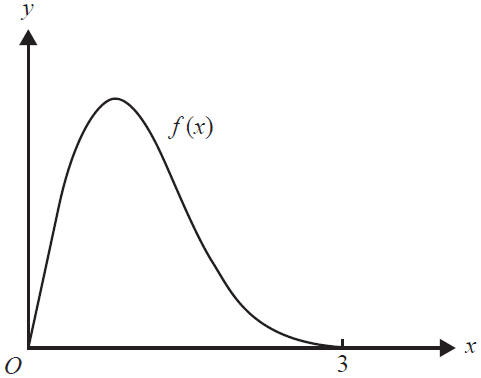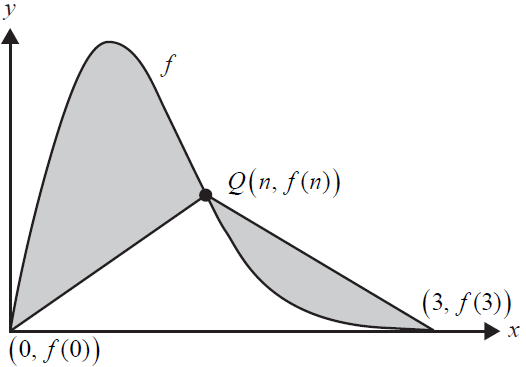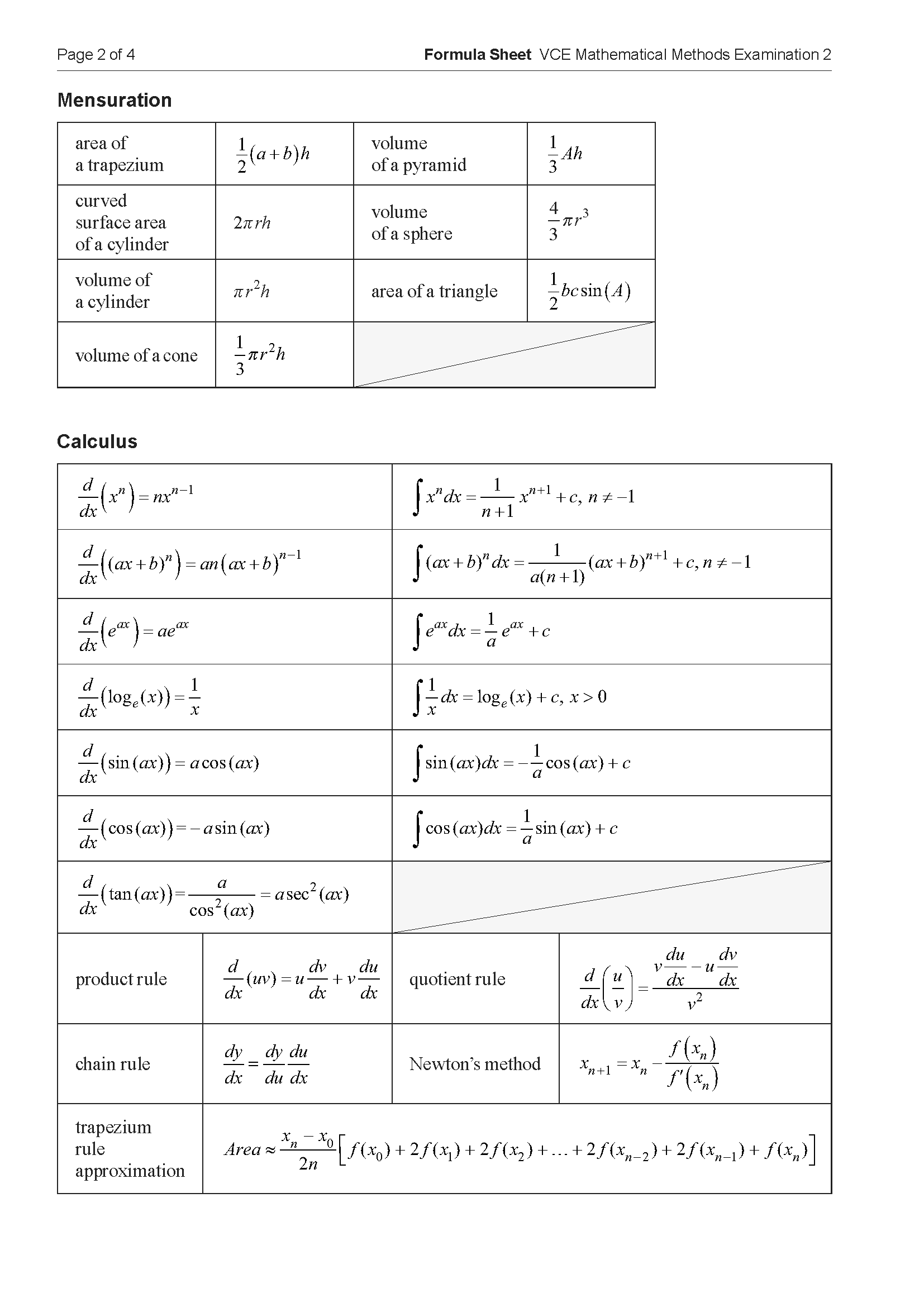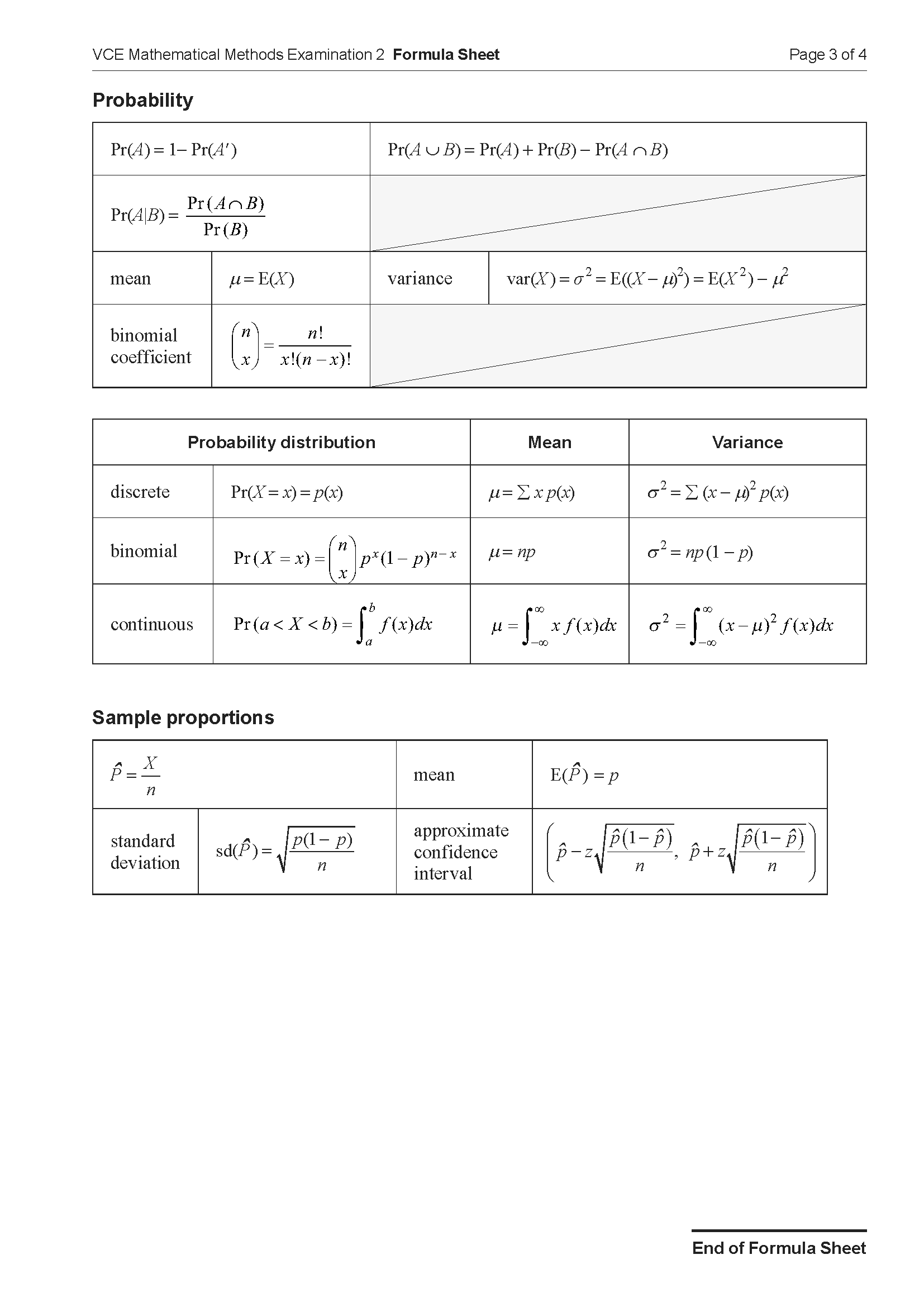VCE Methods Integral Calculus Application Task 12
Number of marks: 13
Reading time: 2 minutes
Writing time: 19 minutes
Section B – Calculator Allowed
Instructions
• Answer all questions in the spaces provided.
• Write your responses in English.
• In questions where a numerical answer is required, an exact value must be given unless otherwise specified.
• In questions where more than one mark is available, appropriate working must be shown.
• Unless otherwise indicated, the diagrams in this book are not drawn to scale.
The graph of the function \(f(x) = 2xe^{1-x^2}\), where \(0 \le x \le 3\), is shown below.

a. Find the slope of the tangent to \(f\) at \(x=1\). 1 mark
b. Find the obtuse angle that the tangent to \(f\) at \(x=1\) makes with the positive direction of the horizontal axis. Give your answer correct to the nearest degree. 1 mark
c. Find the slope of the tangent to \(f\) at a point \(x=p\). Give your answer in terms of \(p\). 1 mark
d.
i. Find the value of \(p\) for which the tangent to \(f\) at \(x=1\) and the tangent to \(f\) at \(x=p\) are perpendicular to each other. Give your answer correct to three decimal places. 2 marks
ii. Hence, find the coordinates of the point where the tangents to the graph of \(f\) at \(x=1\) and \(x=p\) intersect when they are perpendicular. Give your answer correct to two decimal places. 3 marks
Two line segments connect the points \((0, f(0))\) and \((3, f(3))\) to a single point \(Q(n, f(n))\), where \(1 < n < 3\), as shown in the graph below.

e.
i. The first line segment connects the point \((0, f(0))\) and the point \(Q(n, f(n))\), where \(1 < n < 3\).
Find the equation of this line segment in terms of \(n\). 1 mark
ii. The second line segment connects the point \(Q(n, f(n))\) and the point \((3, f(3))\), where \(1 < n < 3\).
Find the equation of this line segment in terms of \(n\). 1 mark
iii. Find the value of \(n\), where \(1 < n < 3\), if there are equal areas between the function \(f\) and each line segment. Give your answer correct to three decimal places. 3 marks
End of examination questions
VCE is a registered trademark of the VCAA. The VCAA does not endorse or make any warranties regarding this study resource. Past VCE exams and related content can be accessed directly at www.vcaa.vic.edu.au

